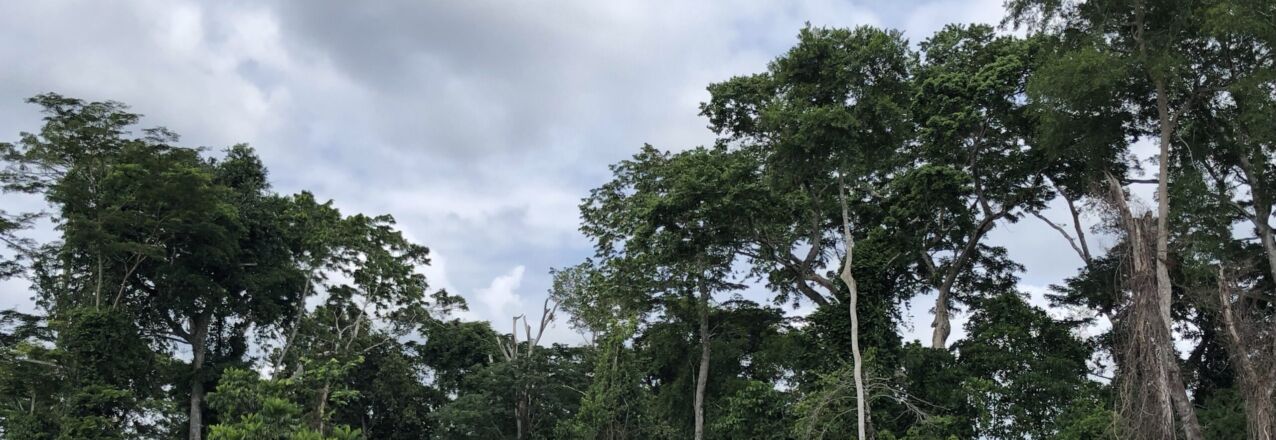Overview of Tenure Issues with Forests and Cocoa
Côte d’Ivoire’s forests have decreased from 16 million hectares in 1900 to 7.8 million hectares in 1990 and to 3.4 million hectares in 2015 (GoCI, 2018). Today 11 percent of the country’s surface area is forested. Of the remaining forests, 39 percent are located in protected areas, 25 percent in gazetted areas (forêts classées) and 36 percent in rural areas (GoCI, 2019b). From 1990 to 2000, rural areas lost the most forest at an annual rate of 7 percent, whereas between 2000 and 2015, gazetted forests were lost the fastest at 4 percent per year (GoCI, 2019b). Today there are 387 forest logging permits covering rural and gazetted lands, though historically logging has been concentrated in rural areas (GoCI, 2019b).
Agriculture – especially cocoa – has been the primary driver of deforestation in Côte d’Ivoire in recent decades (World Bank, 2019). There are an estimated 3.5 million hectares of cocoa plantations – more than remaining forests – of which 750,000 hectares are located in gazetted areas (GoCI, 2019b). Farms are all smallholder and produce on average 40 percent of the world’s cocoa supply, with annual exports exceeding two million tons in 2018 (World Bank, 2019). A fifth of the population depends on cocoa for a living. As land availability in rural areas has diminished, farmers have moved into gazetted forests and protected areas, which today account for a quarter of national production (RFI, 2019).
Two important features differentiate Côte d’Ivoire’s tenure arrangements for cocoa compared to Ghana. First, Côte d’Ivoire’s farms have a different settlement history, with the vast majority established during migrations to forest zones by outsider ethnic groups, mainly the baoulé ethnic group as well as foreigners, mainly from Burkina Faso (OFPRA, 2017). These migrations picked up in the 1940s as part of colonial policy and administrative strategies to attract labor (USAID, 2016) but they intensified after independence to a point where migrants outnumbered locals in many areas (Ruf, 2020).
Migration in the 1970s was driven by President Houphouët Boigny’s slogan “the land is owned by whoever puts it to use” (“la terre appartient à celui qui la met en valeur”). Clearing forest helped secure access to land (Bymolt et al., 2018), and along with a government policy favoring full-sun cocoa varieties (Schulte et al., 2020), migrants had a strong incentive to clear natural forests. Customary arrangements varied and evolved, with most initially governed by the tutorat system of integrating outsiders through sharing of production and gifts with a representative of the land-owning family (Chauveau, 2007).
These arrangements became more monetized as land pressure increased (Chauveau, 2007) and in some instances transitioned to outright land sales from the 1950s (Wily, 2015) but especially the 1970s and1980s (Chauveau, 2007). In the 1990s and 2000s, new tenure arrangements called planter-partager (plant and share) took hold whereby outsiders would clear forests and build a farm and then half of the farm would revert to the landowner upon crop maturity. The new paradigm could be explained by land-owning groups becoming more aware of the value of holding onto land while “financing” the labor needed to establish a viable plantation (Colin & Ruf, 2011). Specific tenure agreements are diverse, with as many as 15 typologies (Wily, 2015). While some of these arrangements resemble those found in Ghana, Côte d’Ivoire differs in the preponderance of migrant farmers and also the violence and politicization of cocoa belt land disputes in the 1990s and 2000s (Chauveau, 2000).
A second distinguishing feature of Côte d’Ivoire is the history of centralized state-driven approaches to land and forest management in disregard of customary practices. This has led to legal pluralism (Lamarche, 2019) and a schism between laws and what is done in practice (OFPRA, 2017). While Ghana has similar features, there is no equivalent of recognized “stool lands” in Côte d’Ivoire despite the existence of parallel customary systems. Instead the rural land law recognizes customary rights only as a temporary stepping stone towards a national titling system controlled by the central government (GoCI, 2017; OFPRA, 2017). This leads to considerable challenges in securing land tenure despite over US$100 million in donor support in recent years (Dagrou & Loroux, 2017; Wily, 2015).
Against this backdrop, the issue of tree tenure has gained increasing attention from several fronts. First, difficulties implementing tree cover and tree planting requirements under standards like the Rainforest Alliance’s Cocoa Certification Program drew attention to misaligned tenure incentives (Ruf & Varlet, 2017). Meanwhile the current government has embraced the concept of “zero-deforestation cocoa” as part of its broader commitment to increasing the country’s forest cover from 11 percent to 20 percent by 2030 (GoCI, 2018). The new forest code of 2019 explicitly addresses tree tenure for the first time and gives primacy to the underlying landowner (GoCI, 2019a). The logic underlying such reforms is as follows: just as secure land tenure is a key predictor of higher cocoa productivity (Schulte et al., 2020), secure tree tenure can incentivize agroforestry. However, as discussed below, Côte d’Ivoire shows that this is not straightforward in practice.


